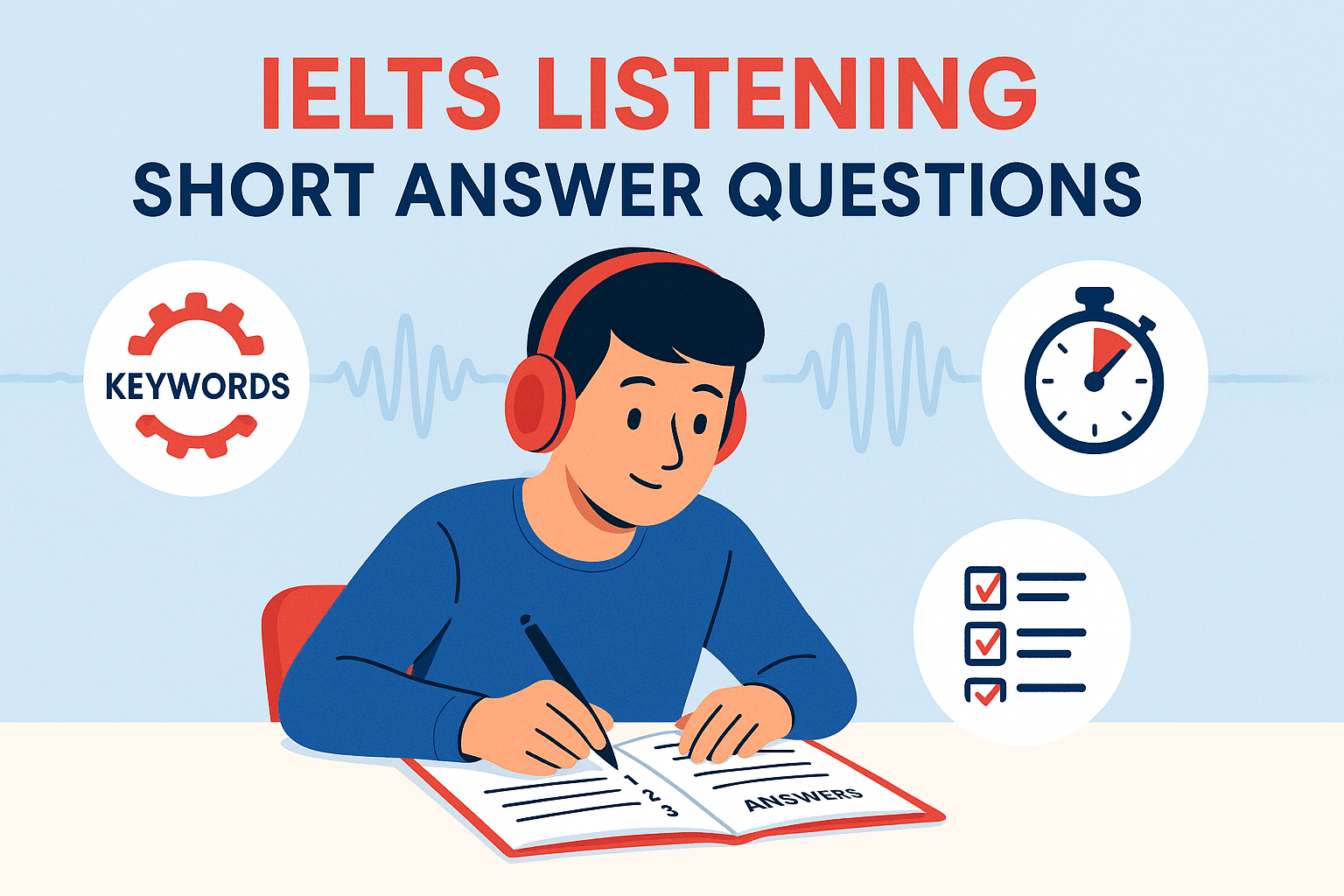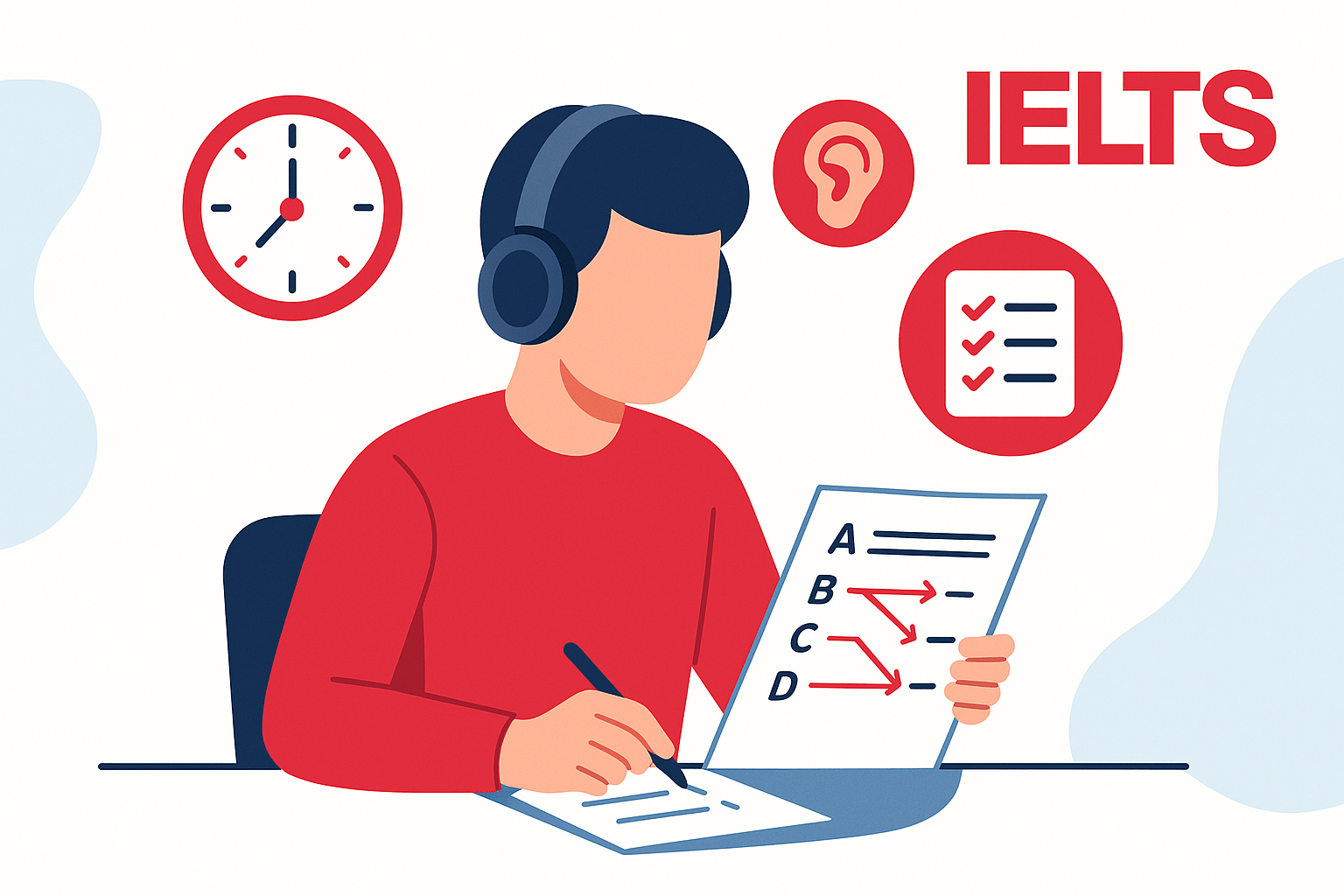As an international IELTS teacher who has worked with thousands of students across Asia, Europe, and the Middle East, one question always comes up in my listening classes: “What exactly is the IELTS Listening test format and timing?” Understanding this structure is essential—because if you don’t know what’s coming, you can’t prepare strategically.
In this guide, I’ll walk you through the IELTS Listening test format and timing step by step. I’ll also share real student challenges I’ve encountered and the solutions that helped them reach Band 7, 8, or even 9.
Why Understanding the IELTS Listening Format and Timing Matters
Many of my students assume listening is just about “hearing well.” But in reality, success in IELTS Listening is about knowing the test mechanics, managing time effectively, and practicing in a focused way.
One of my students, Ali from Egypt, was stuck at Band 6.5 despite strong English skills. Once we broke down the test format and worked on timing, he jumped to Band 8 in two weeks.
If you want the same result, you need to start with a clear understanding of how the test works.
IELTS Listening Test Format: What to Expect
The IELTS Listening test lasts approximately 30 minutes, with an additional 10 minutes for transferring answers in the paper-based version.
You’ll listen to four recordings in increasing difficulty, and answer 40 questions in total.
Here’s how it’s structured:
Section 1 – Social Conversation
A dialogue set in an everyday social context, such as booking a hotel room or inquiring about a course.
✅ Tip from experience: Pay close attention to numbers, names, and spellings—especially in form-filling questions.
Section 2 – Monologue in a Social Setting
You’ll hear a speech, such as a talk about local facilities or a public event.
🎧 Common struggle: Students often zone out here. Practice paraphrasing in real time to stay focused.
Section 3 – Academic Discussion
A conversation between up to four people in an academic context, like a university seminar or group project.
📌 Real case: One of my students in Turkey used colour-coded notes to track speakers—it worked wonders in Section 3.
Section 4 – Academic Lecture
A university-style lecture on a general academic topic. No breaks, no second chances.
🧠 Strategy: Familiarise yourself with lecture vocabulary using real audio from ielts.org or British Council IELTS.
Timing Breakdown for IELTS Listening Test
The timing is strict and non-negotiable. Here’s how it breaks down:
- Total Listening Time: ~30 minutes (audio recordings)
- Answer Transfer Time: 10 minutes (only for paper-based test)
- Computer-Based Test? You get 2 minutes only to check and submit.
Each recording is played once only, so timing and focus are critical.
🕒 Pro Tip: Train your ear with full practice tests under real exam conditions using resources like IELTS IDP or our free IELTS Listening Practice Tests.
Question Types and Timing Strategy
Each section has a mix of question types including:
- Multiple Choice
- Matching
- Plan/Map/Diagram Labelling
- Form/Note/Table Completion
- Sentence Completion
- Short Answer Questions
With 10 questions per section, aim to spend around 1 minute per question, leaving time to review during the answer transfer phase.
One of my high-achieving students in Bangladesh created a time-grid for each part of the test. That simple visual helped her stay on pace and secure a Band 8.5.
Test Day Format Differences: Paper vs. Computer
Paper-Based Test
🕐 30 minutes listening + 10 minutes to transfer answers to the answer sheet.
✍️ You write by hand.
Computer-Based Test
🕐 30 minutes listening + 2 minutes to review your answers.
⌨️ You click or type answers directly.
Many students ask which is better. I always say: practice both. Then choose based on your comfort level.
Where to Learn and Practice More
If you want to go beyond this format overview, check out my full guide:
👉 IELTS Listening for Band 7–9: Complete Guide
Or, if you’re ready to train daily with smart strategy and AI-graded practice, explore our IELTS Premium Courses.
Real Problem: “I Run Out of Time!”
A student from Vietnam once told me:
“I know the answers but I can’t write fast enough!”
This is common. The fix?
- Practice listening and writing simultaneously.
- Use shorthand (e.g., info = information, b/w = between).
- Do full mock tests under time pressure.
You’d be surprised how quickly your brain adapts when the practice is realistic.
Final Thoughts
Understanding the IELTS Listening test format and timing is more than just memorising rules. It’s about using that structure to your advantage. You only get one chance to hear each recording, and every second counts. When you know what to expect, you can focus on listening—not panicking.
If you’re serious about improving your score, the test format should be your first study checkpoint. From there, build strategy, speed, and stamina.
FAQs: IELTS Listening Test Format and Timing
Q1. Is the IELTS Listening test the same for Academic and General Training?
Yes, the Listening section is identical for both Academic and General Training tests.
Q2. Can I pause the audio during the test?
No. The recording is played once only—there are no pauses or repeats.
Q3. Should I choose paper-based or computer-based IELTS?
Choose based on your typing speed and comfort. Both formats follow the same test structure and timing.
Q4. What if I miss an answer—should I guess?
Yes, never leave an answer blank. There’s no penalty for incorrect answers.
Q5. Where can I practice full tests in real format?
You can try IELTS Listening Practice Tests here or explore official options on ielts.org and IDP.





One Response